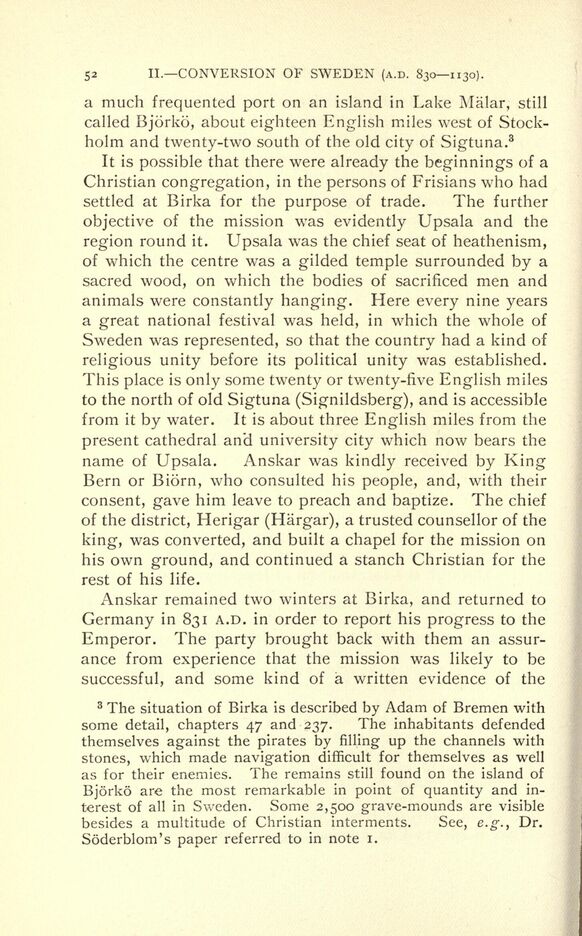
Full resolution (JPEG) - On this page / på denna sida - II. The Conversion of Sweden (830—1130 A.D.)

<< prev. page << föreg. sida << >> nästa sida >> next page >>
Below is the raw OCR text
from the above scanned image.
Do you see an error? Proofread the page now!
Här nedan syns maskintolkade texten från faksimilbilden ovan.
Ser du något fel? Korrekturläs sidan nu!
This page has never been proofread. / Denna sida har aldrig korrekturlästs.
5 2 II. CONVERSION OF SWEDEN (A.D. 8301130).
a much frequented port on an island in Lake Malar, still
called Bjorko, about eighteen English miles west of Stock
holm and twenty-two south of the old city of Sigtuna.
3
It is possible that there were already the beginnings of a
Christian congregation, in the persons of Frisians who had
settled at Birka for the purpose of trade. The further
objective of the mission was evidently Upsala and the
region round it. Upsala was the chief seat of heathenism,
of which the centre was a gilded temple surrounded by a
sacred wood, on which the bodies of sacrificed men and
animals were constantly hanging. Here every nine years
a great national festival was held, in which the whole of
Sweden was represented, so that the country had a kind of
religious unity before its political unity was established.
This place is only some twenty or twenty-five English miles
to the north of old Sigtuna (Signildsberg), and is accessible
from it
by water. It is about three English miles from the
present cathedral and university city which now bears the
name of Upsala. Anskar was kindly received by King
Bern or Biorn, who consulted his people, and, with their
consent, gave him leave to preach and baptize. The chief
of the district, Herigar (Hargar), a trusted counsellor of the
king, was converted, and built a chapel for the mission on
his own ground, and continued a stanch Christian for the
rest of his life.
Anskar remained two winters at Birka, and returned to
Germany in 831 A.D. in order to report his progress to the
Emperor. The party brought back with them an assur
ance from experience that the mission was likely to be
successful, and some kind of a written evidence of the
3
The situation of Birka is described by Adam of Bremen with
some detail, chapters 47 and 237. The inhabitants defended
themselves against the pirates by filling up the channels with
stones, which made navigation difficult for themselves as well
as for their enemies. The remains still found on the island of
Bjorko are the most remarkable in point of quantity and in
terest of all in Sweden. Some 2,500 grave-mounds are visible
besides a multitude of Christian interments. See, e.g. ,
Dr.
Soderblom s paper referred to in note i.
<< prev. page << föreg. sida << >> nästa sida >> next page >>